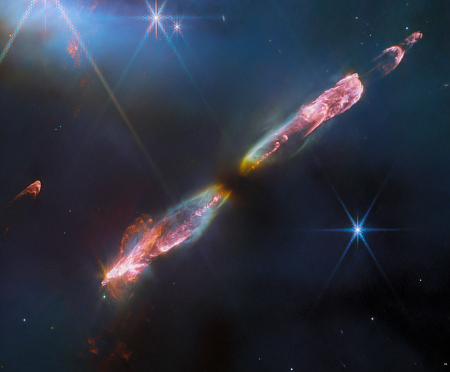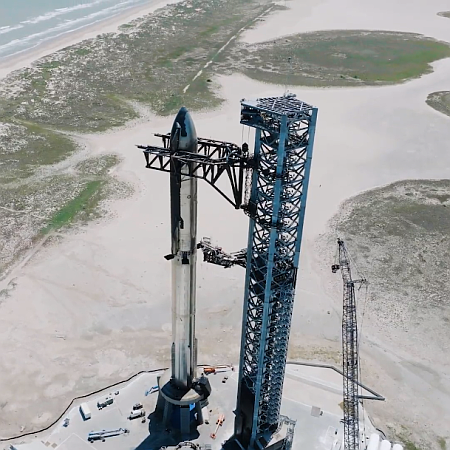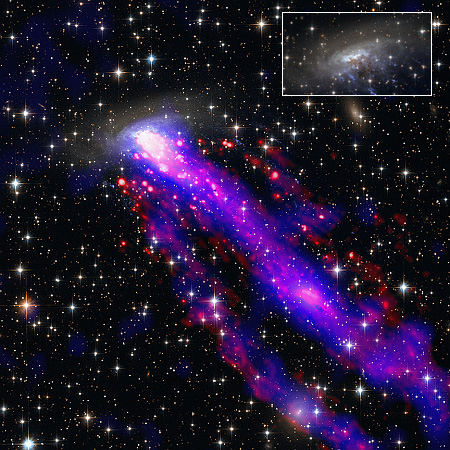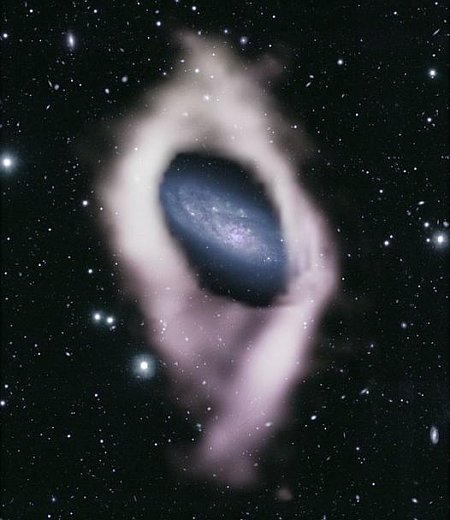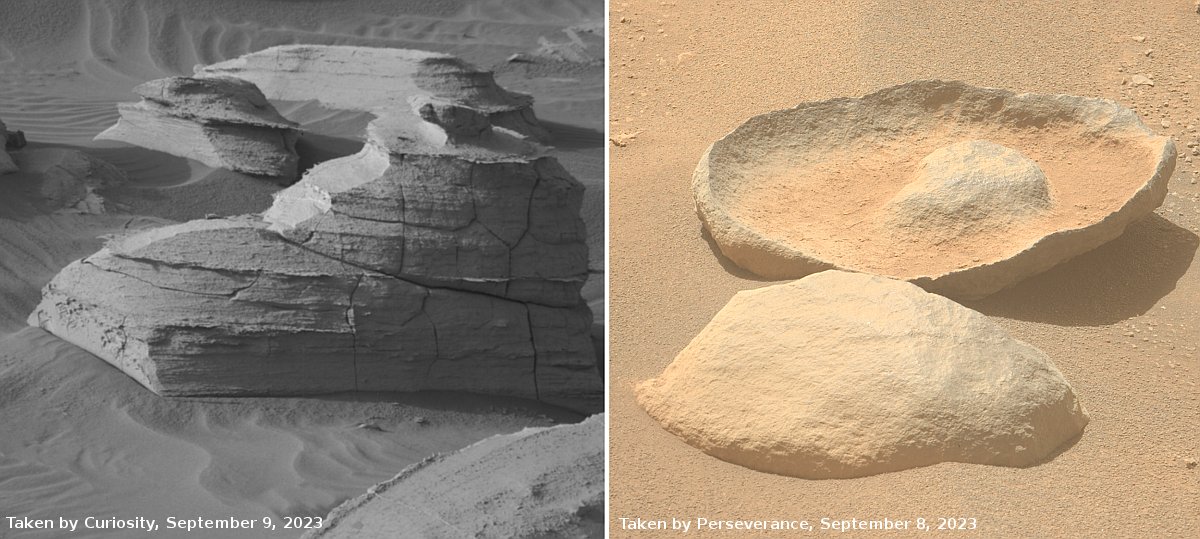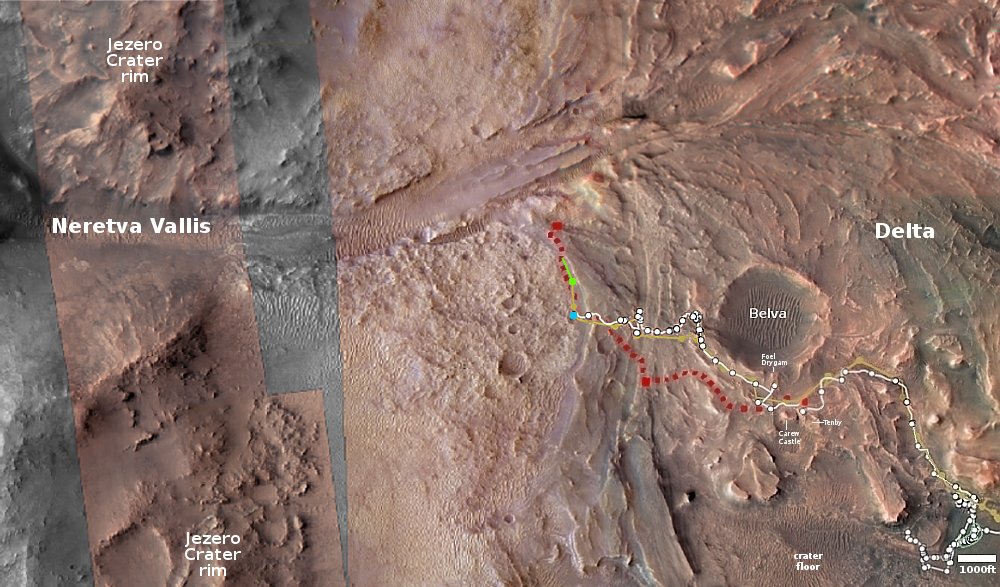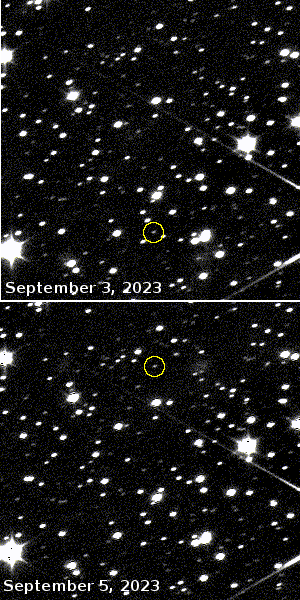Webb captures new infrared image of bi-polar jets shooting from baby star
Using the Webb Space Telescope, astronomers have taken a new infrared image of the baby star Herbig-Haro 211 (HH 211), known best for the bi-polar jets that shoot out in opposite directions at very great speeds.
That picture is to the right, reduced and sharpened to post here, and has about 5 to 10 times the resolution of previous infrared images.
The image showcases a series of bow shocks to the southeast (lower-left) and northwest (upper-right) as well as the narrow bipolar jet that powers them. …. The inner jet is seen to “wiggle” with mirror symmetry on either side of the central protostar. This is in agreement with observations on smaller scales and suggests that the protostar may in fact be an unresolved binary star.
Earlier observations of HH 211 with ground-based telescopes revealed giant bow shocks moving away from us (northwest) and moving towards us (southeast) and cavity-like structures in shocked hydrogen and carbon monoxide respectively, as well as a knotty and wiggling bipolar jet in silicon monoxide. Researchers have used Webb’s new observations to determine that the object’s outflow is relatively slow in comparison to more evolved protostars with similar types of outflows.
The team measured the velocities of the innermost outflow structures to be roughly 48-60 miles per second (80 to 100 kilometers per second). However, the difference in velocity between these sections of the outflow and the leading material they’re colliding with — the shock wave — is much smaller. The researchers concluded that outflows from the youngest stars, like that in the center of HH 211, are mostly made up of molecules, because the comparatively low shock wave velocities are not energetic enough to break the molecules apart into simpler atoms and ions.
The baby star at the center of these jets, about a 1,000 light years away, is estimated to be only a few ten thousand years old, and presently has a mass less than a tenth of the Sun. With time it will accrete more matter and become a full-sized star.
Using the Webb Space Telescope, astronomers have taken a new infrared image of the baby star Herbig-Haro 211 (HH 211), known best for the bi-polar jets that shoot out in opposite directions at very great speeds.
That picture is to the right, reduced and sharpened to post here, and has about 5 to 10 times the resolution of previous infrared images.
The image showcases a series of bow shocks to the southeast (lower-left) and northwest (upper-right) as well as the narrow bipolar jet that powers them. …. The inner jet is seen to “wiggle” with mirror symmetry on either side of the central protostar. This is in agreement with observations on smaller scales and suggests that the protostar may in fact be an unresolved binary star.
Earlier observations of HH 211 with ground-based telescopes revealed giant bow shocks moving away from us (northwest) and moving towards us (southeast) and cavity-like structures in shocked hydrogen and carbon monoxide respectively, as well as a knotty and wiggling bipolar jet in silicon monoxide. Researchers have used Webb’s new observations to determine that the object’s outflow is relatively slow in comparison to more evolved protostars with similar types of outflows.
The team measured the velocities of the innermost outflow structures to be roughly 48-60 miles per second (80 to 100 kilometers per second). However, the difference in velocity between these sections of the outflow and the leading material they’re colliding with — the shock wave — is much smaller. The researchers concluded that outflows from the youngest stars, like that in the center of HH 211, are mostly made up of molecules, because the comparatively low shock wave velocities are not energetic enough to break the molecules apart into simpler atoms and ions.
The baby star at the center of these jets, about a 1,000 light years away, is estimated to be only a few ten thousand years old, and presently has a mass less than a tenth of the Sun. With time it will accrete more matter and become a full-sized star.

